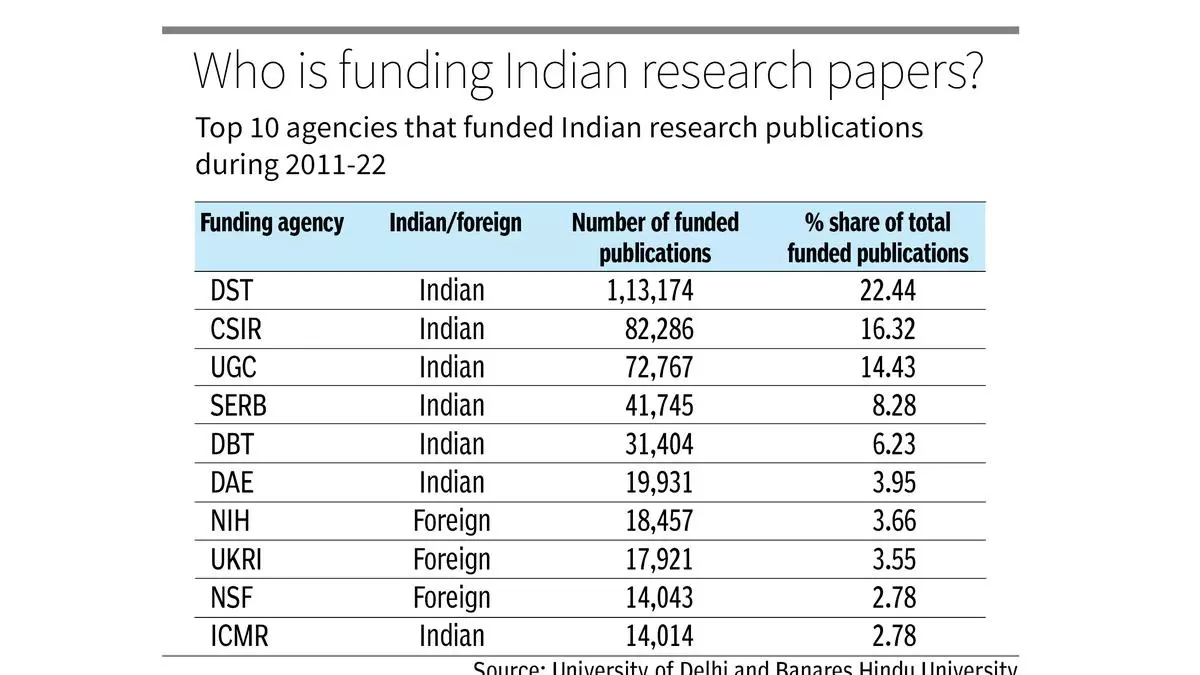Research funding in India continues to be low, mostly coming from the government. Foreign agencies too chip in, but the Indian private sector is missing in action, according to a recent study (yet to be peer-reviewed) by researchers from the University of Delhi and Banaras Hindu University.
India’s gross expenditure on research and development (GERD) has declined from 0.9 per cent of GDP in 2008 to 0.64 per cent in 2021. There has been a long-standing call to boost the GERD above 2 per cent.
The study was conducted for the Anusandhan National Research Foundation, a government body tasked with providing strategic direction for scientific research. It analysed technical publications between 2011 and 2022 to determine how many were funded and by whom.
Of the 9,20,284 publications, only 54.79 per cent acknowledged receipt of funding support. To compare, this figure is 86.48 per cent in China, 71.13 per cent in Japan, and 68 per cent in the US, Germany and the UK.
The share of funded publications rose from 49.93 per cent in 2011 to 57.83 in 2018, and then declined to 52.68 per cent in 2022. The study found that 87.63 per cent received funds from Indian agencies and 73.6 per cent from foreign agencies, showing that many “attracted funding support from Indian and foreign agencies”.
The Department of Science and Technology (DST) is the top funder, at 22.48 per cent (see table). The study quotes a report from DST to note that the government contributed 43.7 per cent towards R&D against 36.4 per cent from the private sector.
“The majority of funding to research and development activities is coming from public funding,” it says, adding that, in contrast, in many developed countries private funding is more.
